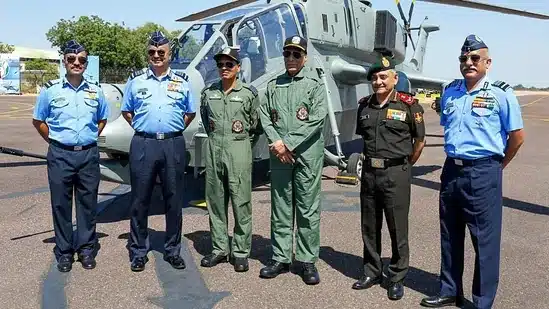Gen. Anil Chauhan, the incoming Chief of Defense Staff, will have his work cut out for him in getting the three services to agree on theatre commands and keeping the military research institution accountable for developing gear in a timely manner.
The head of the Indian Air Force, Air Chief Marshal V R Chaudhari, stated on Tuesday that his organisation was not opposed to any integration or theatre command procedure but had concerns about the planned military architecture. Every service has its own doctrine. The new formations must not in any way contradict the IAF’s doctrinal principles, the Chief said.
This remark has two sides to it. First, it makes sense for the IAF to have concerns about distributing its sparse aviation assets among the many suggested military theatre commands. The Air Force does have a point of division of its resources, even though the so-called IAF’s sanctioned strength of 42 squadrons was never approved by the Cabinet Committee on Security (CCS), but was just proposed by the Chairman, Chiefs of Staff Committee (COSC).
However, this logic conceals the fact that the Air Force is truly concerned about the elimination of its current command structures, which are led by no fewer than seven commanders-in-chief, all of whom are three-star officers and Air Marshals with access to significant establishments.
Despite having an officer cadre with the same size as the senior service of the Indian Navy, the Indian Air Force (IAF) has roughly ten times as many commands as the Indian Army. The Indian Navy, in contrast, only has three commands: West, East, and South.
The upper echelons of the IAF are most concerned about being left to manage one Air Defence Command, one marine theatre command for the Navy, and two operational commands for the Army, one in the west and one in the east. Similar to the Andamans and Nicobar Command, the northern command will be a tri-service command that answers to the Chief of Defence Staff.
While the outspoken pronouncements made by Air Chiefs in the past and present have made the task more challenging, the Narendra Modi government will only move forward with the establishing of military theatre command after having a thorough discussion with all involved. As manned jets are already seriously threatened by modern air defence systems like the Iron Dome and the S-400, the Air Force holds diverse opinions on armed drones and is in favour of them.
The question to ask is how an individual force doctrine can be different from the national war doctrine and why the government would be interested in weakening the force by imposing a super structure, even though the IAF chief has talked about a revised and updated force doctrine that he fears may be compromised by the new structures.
The military theatre commands, such as the US Indo-Pacific Command or the Central Command, solely operate under an aggressive war strategy. The national security planners are aware that before the theatre commands are operationalized, numerous conflict scenarios will need to be imagined.The administration is considering initially establishing the cyber, space, and missile command before moving toward the theatre commands precisely for this reason.
Even though the military theatre commands are currently being debated in the wake of the Kargil conflict, the IAF’s public posturing has added rigidity and military bureaucratic barriers to the task at hand. As evidenced by the obstacles the military scientific establishment erected in the acquisition of an Israeli anti-tank missile system in 2018 and the choice of Safran aircraft engines over GE-414 engines in spite of the French company’s offer of joint development and complete technology transfer, the military bureaucracy is just as strong as the civilian bureaucracy.
Following the PLA invasion on East Ladakh on May 5, 2020, and the anticipated delay in the AMCA fighter, which was originally designed with a GE-414 engine, these obstacles have proven expensive as India was forced to purchase the same Spike ATGM at a higher price. Only if the bureaucracy of the three armed services and the scientific establishment are held accountable will military reforms and the development of the military-industrial complex in India be conceivable.












